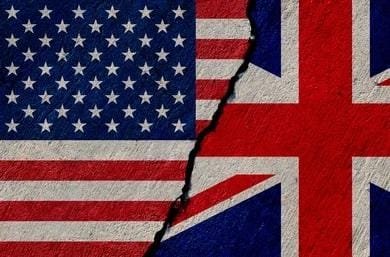Simulation Context: Committee on the Third World War Over Water (Year 2050)
Throughout history, conflicts over resources have been a constant, with land and other basic commodities serving as the primary triggers for violent wars. By the year 2050, water—a vital resource for survival—has become the focal point of an unprecedented global conflict. As the impacts of climate change intensify and the planet becomes increasingly arid, nations have found themselves locked in fierce competition for control over water resources.
The Third World War, sparked by scarcity and the struggle for access to water, has left the world on the brink of a humanitarian and environmental crisis. In this post-apocalyptic scenario, the international community gathers to negotiate a framework to address the critical challenges posed by global water scarcity and to prevent further escalation of the conflict.
The committee is in the midst of intense dialogues, where delegates from various nations are striving to establish policies and technologies that promote sustainable water management practices. The objective is to design a global action plan that ensures international cooperation in the distribution and conservation of water resources, securing peace and stability in a world where water has become the most precious and contested resource.
This simulation aims not only to address the immediate needs of the most affected nations but also to prevent future wars over vital resources through the implementation of multilateral agreements and dispute resolution mechanisms.
How do I draft my opening speech and position paper?
What are the SAMONU Model Rules?
Global Context (2025-2050)
2025-2029:
During this period, nations globally focused on various agreements related to the Sustainable Development Goals (SDGs). Countries developed and implemented strategies to mitigate environmental damage and promote sustainability. However, the ongoing demands of industrial production and consumption caused nearly irreversible harm to the environment. By 2048, the consequences of global warming became starkly visible. In regions such as arid parts of Africa and the Middle East, rapidly depleting water reserves and severe droughts created widespread humanitarian crises, leading to significant food shortages and escalating migration issues.

2030s:
The 2030s saw a sharp rise in global tensions, driven by Russia’s defeat of Ukraine and increasing instability within the United States. A notable event was the 2034 Arab and Eastern Countries Audience, where nations from these regions formed a mutual economic and military cooperation pact. This alliance intensified geopolitical rivalries by positioning itself as a counterbalance to NATO’s influence. The 2037 Pyongyang Conference further escalated tensions with the creation of the Eastern Alliance, which focused on securing resources and defending against Western actions. This coalition was formed to assert control over critical resources and bolster regional power against perceived Western encroachment.

2040s:
By 2041, water scarcity emerged as a severe global issue. Industrialized nations faced contamination and depletion of their water supplies due to relentless production activities. This crisis fostered a Cold War-like environment, with NATO, the Arab Alliance, and the UEP engaging in extensive espionage, sabotage, and disinformation campaigns. Diplomatic relations deteriorated, and these alliances began occupying Latin American territories under the pretense of safeguarding them from opposing forces. This occupation led to widespread protests and increased regional instability in Latin America. In 2049, a major confrontation erupted between NATO and the UEP, with both sides engaging in direct conflict. The Arab Alliance capitalized on the chaos to launch simultaneous attacks on both NATO and the UEP, triggering a global conflict centered around water resources. The escalating situation, including nuclear threats, spurred a massive civil push for dialogue, leading to an international meeting in late 2050 with representatives from Latin America and Africa to address the crisis and seek resolution.




La academia FreeLish otorgará al mejor delegado de la comisión WWIII, una beca completa para estudiar francés. ¡Espero que seas tú!
Agenda items and issues to be discussed in the committee
Revitalize the Global Partnership for Sustainable Development
What contingency plans should the commission develop to respond to potential water-related crises in different regions?
Which mechanisms can be established to facilitate ongoing international cooperation in managing water resources and preventing conflicts?
What specific policies and technologies can be implemented to promote sustainable water management practices globally?
Co-Chairperson

Chairperson

Co-Chairperson STJ

UN delegations
| UN delegations | Country Context | Student |
|---|---|---|
| United States | NATO By 2050, the USA would still be one of the most powerful nations militarily and economically. However, since the 2024 presidential elections, internal stability in the USA would have been in decline in the following years. This, combined with the scarcity of natural resources and external and internal tensions, would lead the USA, in 2047, to begin militarily occupying countries rich in these raw materials, mostly located in Latin America. All under the pretext of protecting them from Eastern countries. | Laura Victoria Hernandez |
| China | United East Pact (UEP) China would continue its economic growth from 2025 to 2035; however, starting in 2036, air pollution and overall contamination in Chinese territory (a result of massive production of goods) would become overwhelming. The excessive contamination of water bodies would render China’s water reserves unsuitable for consumption or any other use, prompting China to turn its gaze towards the water-producing mountains of South America. | María del Mar Torres |
| Russia | United East Pact (UEP) China would continue its economic growth from 2025 to 2035; however, starting in 2036, air pollution and overall contamination in Chinese territory (a result of massive production of goods) would become overwhelming. The excessive contamination of water bodies would render China’s water reserves unsuitable for consumption or any other use, prompting China to turn its gaze towards the water-producing mountains of South America. | Ethan Quintero |
| Canada | NATO Canada has been one of the USA’s greatest allies, being a major producer of raw materials such as wood, automotive elements, fertilizers, etc. Throughout the 20th and 21st centuries, the USA and Canada would strengthen their relations, increasing exports and gradually depleting resources. In 2043, a contract was signed where most of the war factories would be located in Canadian territory. | Marta Mendieta |
| Australia | Affinity: NATO Australia has been a strategic ally of the USA due to its strategic location. Multiple stations that receive and transmit satellite signals have been installed in the country. Pine Gap, the most important of these, is where multiple signals containing military objectives in the form of coordinates are processed and used in attacks. In 2036, China began a campaign exposing what was being done at Pine Gap and threatened to attack the facility. After many months of tension, the USA and China reached an agreement whereby Pine Gap would cease operations against China and its allies and stop all espionage activities. Despite this agreement, with the onset of the war in 2050, Pine Gap resumed its previous operations. | Lucas Garcia |
| Japan | Affinity: NATO Japan would begin to experience water problems; underground reserves started to dry up, and desalination methods began to be costly and environmentally damaging due to the amount of energy needed to operate them. Japan would strengthen its relations with the USA and South Korea due to the rising tensions in the region; the situation on the Korean Peninsula and tensions with China would lead to an increase in Japanese military spending and a rise in its military force. Japan essentially became a naval base for the USA and a strategic point in Asia. | Santiago Peña |
| Germany | NATO Despite the global economic downturn and rising inflation, Germany has managed to maintain its status as Europe’s strongest economy and NATO’s primary base on the continent. After Ukraine’s fall, Europe entered a state of high alert, though ground battles on European soil were largely futile. Germany played a crucial role in gathering and training NATO troops before deploying them to the Americas. Additionally, Germany and the UK have become major centers of NATO’s military production, operating with a high level of secrecy. | Maria José Ospina |
| Mexico | Mexico has been a producer of raw materials throughout history, something the USA has taken advantage of. Multiple trade agreements would be made over the years between both countries; however, the agreements increasingly favored the USA, leaving little profit for Mexico. In 2028, an investigation revealed how Mexican politicians in power were being bribed by the heads of large companies to secure better deals for them. This would generate resentment among the population, which elected a series of people with protectionist ideals for their resources, selling only at relatively high prices. | María Ortiz |
| South Korea | Affinity: NATO South Korea would establish itself in the years following 2027 as a powerhouse in the technology sector. However, the excessive production of these goods would result in the contamination of water sources; along with pollution from countries like India and China, and internal environmental problems, the economy would decline. In 2049, a water outbreak would be discovered in the Taebaek mountain range, leading to a conflict between the two Koreas, albeit a very small one. | Sharit Guarnizo |
| Egypt | Affinity: Arab Alliance Egypt has been a nation of great economic importance due to the Suez Canal, through which a large amount of goods pass. By 2030, Egypt would suffer from water shortages, forcing it to raise Suez Canal tariffs. The increase in these taxes would lead to a rise in the cost of many goods, which would ultimately affect Egypt. In 2043, Egypt would mediate between Israel and Palestine, managing to establish two independent states. The high flow of water resources from South America to Europe would generate an increase in profits for Egypt. | Ana María Chávez |
| United Kingdom | NATO Following Brexit, diplomatic relations between the UK and continental Europe declined significantly, becoming primarily economic in nature. The high influx of migrants caused instability in major urban centers, leading to tensions over jobs, food, and housing. As the global situation worsened, the UK shifted its production focus almost entirely to military goods, following NATO’s directives. This shift, along with increasing water scarcity, led to widespread public dissatisfaction. By 2045, the British people were openly criticizing the government and NATO, though this did not prevent the UK from sending troops to Latin America. Current Status (2050): The UK is deeply involved in the global conflict as a key NATO member, despite internal unrest and public dissatisfaction. The nation’s focus on military production has strained its economy and society, but it remains committed to NATO’s objectives. | Valeria Wyckhuys |
| South Africa | South Africa began to experience various natural disasters, leading to different economic and social calamities. The country’s corruption would create an unsustainable social situation. By 2033, the country’s migration had become so severe that external aid was needed; with the minimum help, South Africa would reach a small but useful stability, making the South African people realize the importance of uniting to move forward. The country’s corruption was highly attacked, and a participatory government was established in South Africa. By 2041, South Africa would be one of the most stable African nations, despite the economy and water scarcity, something that would help its rapprochement with Nigeria, another relatively stable nation, and thus represent the African people in the global dialogues of 2050. | Kaory Alejandra Gil Rozo |
| Saudi Arabia | Arab Alliance Saudi Arabia would generate great wealth due to oil exploitation. In recent decades, this country, along with other large Arab and oil-producing countries, would realize that oil, like other resources, would run out, including a very scarce one in that region: water. These states would decide to focus on developing their economy through other means unrelated to oil and ally with the objective of securing a share of South America’s water resources. | Manuela Valencia |
| Argentina | Argentina suffered major economic setbacks in the 2020s; however, thanks to radical actions taken by the Argentine government, they managed to improve in this aspect, but at the cost of public investment and the violation of many basic rights of its population. Argentina would achieve some internal stability by the mid-2030s and began to view the state of the world with concern. In 2043, Argentine scientists discovered a water deposit in Argentine Patagonia; this reserve was protected and preserved by the government, which denied its use for foreign exploitation and prioritized its responsible use exclusively for the Argentine people. In 2048, Argentina and Brazil would draw closer, seeing that they were among the few neutral countries; they took the initiative to demand dialogue between the world’s powers and reach a global agreement. | Juan Pablo Román (Retirado) |
| Brazil | Brazil has been one of the most biodiverse countries in the world, with multiple natural resources, including vast water reserves. Brazil would remain the country with the most fresh water in the world, which would lead to significant trade in the 2030s, making it one of the richest countries in the world. Despite this, the Brazilian government would realize the increasingly pronounced global water scarcity. Conservation projects for strategic points like the Amazon and high investment in scientific fields related to water care would be prioritized. With the tightening of relations between the UEP, Venezuela, and Bolivia, the presence of NATO troops in Colombia, Ecuador, and Peru, and the dialogues between the AA and countries like Uruguay, Chile, and Paraguay, Brazil would increase its military spending and clarify its neutral stance, leaving a threat to respond to any act that threatens its sovereignty. This stance, similar to that of Argentina, would signify a rapprochement between the two governments. The two countries would represent those voices in the world seeking dialogue between the powers. | Valeria Neira |
| Belgium | Affinity: NATO Belgium, a central hub in Europe, maintained its role as a crucial NATO member throughout the early 2020s. The country experienced economic and political stability despite the global challenges of the time. As water scarcity issues began to escalate globally, Belgium continued to support NATO’s strategies and policies, focusing on maintaining its strategic importance in European and global affairs. 2050: By 2050, Belgium had solidified its position as a key player within NATO, contributing to the alliance’s efforts to address the water crisis and counteract rival blocs. With its strong infrastructure and diplomatic leverage, Belgium played a pivotal role in coordinating NATO’s actions and maintaining stability in Europe amidst the broader global conflict over water resources. | Andrés Gómez |
